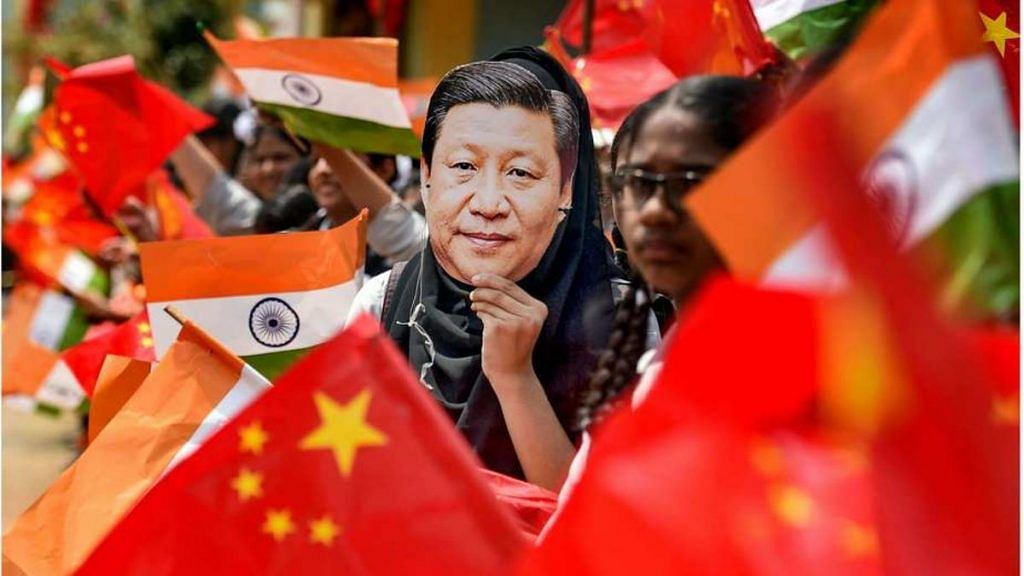The Narendra Modi government’s move to revise India’s policy regarding Foreign Direct Investment comes close on the heels of Congress leader Rahul Gandhi’s appeal to protect Indian companies from opportunistic takeovers during the current economic crisis brought upon by the coronavirus pandemic. By taking control of the ‘approval’ part, instead of allowing investments automatically from countries like China whose economic model seems to have collapsed, New Delhi has opened a window of opportunity to trade with Beijing on new terms and from a position of strength.
It would augur well for India’s democracy if the Bharatiya Janata Party and the Congress converge on economic, security and strategic issues, especially at a time when the coronavirus pandemic, whose geographic origin lies in China’s Wuhan, has impaired economies, quarantined people and locked down countries, raising question marks over the future.
Also read: There’s new hope for ‘Make in India’ as MNCs look to spread out from virus-hit China
Chinese economic model
At the 2013 ASEAN summit in Indonesia, President Xi Jinping unveiled China’s grand plans for the 21st century that would include massive investments in port development from East Africa to Indonesia all along the Indian Ocean to the Pacific, to increase maritime trade. More than 60 countries, accommodating a staggering two-thirds of the world population, lined up to sign contracts with Beijing to become part of Xi Jinping’s signature Belt and Road Initiative (BRI).
In the next five years, China disbursed more than $200 billion and signed hundreds of contracts with trade under BRI reaching $1.34 trillion in 2019. Chinese economists called it the ‘Made in China 2025’ economic strategy that would finally seek to challenge the present international norms, institutional framework and redraw the geopolitical and economic map of the world. Xi Jinping never made a secret of China’s grand strategy to emerge as the superpower of the world displacing the United States from its numero uno position.
Then came the coronavirus, which has now spread to more than 200 countries, including all those 60-odd nations that had lined up in Beijing to be part of the BRI projects.
Also read: India plans to resume trade dialogue with China once Covid situation stabilises: Envoy Misri
Crisis brings opportunities
The trade and geopolitical architecture of the world is all set to undergo a massive change, if not a metamorphosis. The authoritarian regime in Beijing has had much greater advantage in doing brisk global trade than the democratic rule-based New Delhi could comprehend. Yet, China is one of the biggest trading partners of India. With the trade figures of $92.68 billion with a deficit of $56.77 billion in favour of China in 2019, New Delhi may not be able to put trade with Beijing on hold forever. Sooner or later, India will have to resume trade with China.
From 4 per cent output in global trade share in 2003, China upgraded its manufacturing facilities to increase its global output share to 16 per cent by 2019. But the decline in the global trade caused by the coronavirus pandemic will be much faster than estimated and far more severe than the SARS impact in 2003. According to the estimates of the United Nations Conference on Trade and Development (UNCTAD), the manufacturing slowdown in China could lead to a $50 billion decline in exports across global value chains.
India can fill the gap in Chinese manufacturing facilities and fulfil the pending contracts, thereby bridging the gap in the supply chain mechanism without antagonising Beijing.
Many African nations that had signed the “killer loan” contracts and blindly walked into the debt traps are going back on these contracts. Tanzanian President John Magufuli recently cancelled the $10 billion loan agreement signed by his predecessor Jakaya Kikwete with Chinese investors to construct a port at Mbegani creek in Bagamoyo, north of Dar es Salaam, for 99 years of uninterrupted lease.
It is no coincidence that president of Sierra Leone Julius Maada Bio, who went into quarantine as one of his bodyguards tested positive for Covid-19, had cancelled the $318 million Mamamah airport construction agreement with China. Zambia, yet another emerging African economy, was on the verge of losing its flagship electricity company Zesco to China after defaulting on loan repayment. The country’s opposition protested that the Zambia National Broadcasting Corporation (ZNBC) was already being run by the Chinese, an allegation strongly refuted by the government. The Kenyan government cancelled the $2 billion 3U-981 MV Lamu coal-based power plant agreement to be built by China with a 25-year power purchase agreement.
Many of these BRI projects can become part of the Asia Africa Growth Corridor (AAGC), where the Indian government offers lucrative line of credit and also encourages the country’s robust private sector to undertake these projects.
A long-term trade arrangement will have to be worked out with all stakeholders based on a tripartite arrangement. Needless to say, this will require great political will power, diplomatic acumen and strong economic fundamentals at home. It would be foolish and naïve to make a five-year economic plan today. But a five-year economic revival plan is urgently needed in this moment of crisis.
The author is a member of the National Executive Committee of the BJP and former editor of Organiser. Views are personal.
